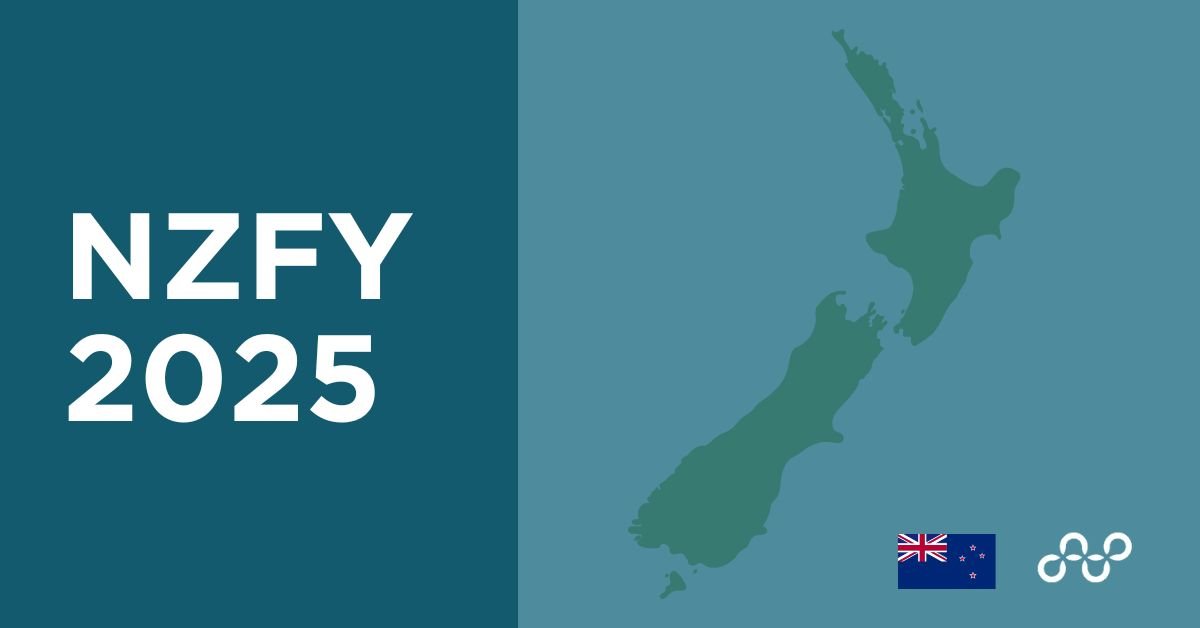

NZFY 2025 poster
The New Zealand Government has outlined its key priorities and procurement processes for the 2025 financial year in a recent webinar between New Zealand government officials and the Public Sector Network. The panel included Charlotte Pottinger, Manager of Business Relationships with the Ministry of Business, Innovation & Employment (MBIE), Craig Butler, Head of Advisory and Business Services at New Zealand Government Procurement (NZGP), and Chris Webb, NZ Managing Partner of the Public Sector Network. Together, they discussed significant shifts in government strategies, the role of procurement, and essential tools available to help businesses succeed in contracting opportunities.
This article unpacks the key themes of the industry briefing, focusing on the major 2025 government strategies and procurement priorities, how MBIE is working to better prepare agencies to engage suppliers, and the tools and resources businesses can leverage to succeed in securing government contracts.
Major 2025 Government Strategies and Procurement Priorities
In 2025, New Zealand's government procurement strategy will undergo substantial changes in response to the country's fiscal constraints. This shift represents a move toward greater scrutiny of expenditures and an emphasis on ensuring agencies obtain maximum value for money.
“We have noticed there's been quite a change in the focus for us. It's now a lot around fiscal sustainability and making sure that agencies are getting what they've signed up for through their procurement activities."
- Charlotte Pottinger, Manager of Business Relationships, MBIE
The annual government spend of approximately NZD 51 billion on goods and services is being scrutinized more closely, with government agencies expected to ensure their procurement practices align with the principles of cost-efficiency and accountability. Contracts are being reviewed with greater attention to ensuring that agencies are fulfilling their obligations and that spending is justifiable.
The New Zealand Government’s procurement framework is governed by a set of procurement rules that establish how agencies should plan, manage, and execute their procurement activities. These rules are designed to ensure that government procurements are fair, competitive, and deliver the best outcomes for taxpayers. The overarching principles that guide these rules emphasize the importance of thorough planning, fairness to suppliers, and selecting the right supplier for each procurement.
Several major sectors will receive significant investments in the coming financial year, despite the economic constraints. These include:
Infrastructure: Approximately NZD 18 billion will be spent on both vertical and horizontal infrastructure projects. This includes transport like roads, rail and public transport and built infrastructure like hospitals, schools and prisons. The Regional Infrastructure Fund, valued at NZD 1.2 billion over the next three years, will target regional projects that focus on climate resilience and sustainable development.
Information and Communication Technology (ICT): ICT is another priority area, with a significant portion of the procurement focused on building systems and services for government agencies to improve service delivery.
While these sectors remain high priorities, procurement activities will need to balance modernization needs with the imperative for cost efficiency, particularly as the government implements measures to curb public sector spending.
“We have seen a change in the relative weightings of things, and whereas 18 months ago it wouldn't have been uncommon for an agency to publish an RFP without price as a weighted criteria, now, pretty much most RFPs will either have price as a weighted criteria or as one of the key criteria.”
Craig Butler, Head of Advisory and Business Services, NZGP
How the Ministry of Business, Innovation & Employment (MBIE) is better-preparing agencies to engage suppliers
To ensure that government agencies can navigate this evolving landscape, MBIE is actively working to better prepare these agencies for engaging with suppliers. MBIE's New Zealand Government Procurement (NZGP) arm plays a crucial role in managing all-of-government (AoG) contracts and providing guidance on adhering to the government's procurement rules.
One of the main focuses of MBIE’s efforts is on ensuring transparency and accountability in procurement processes. Agencies are being encouraged to undertake a comprehensive review of their contract landscapes, ensuring that they can account for every dollar spent. This shift towards stricter budget management has been supported by MBIE through:
- Providing Support and Advice: MBIE offers expertise and advice to government agencies to help them navigate procurement rules, ensuring they are compliant and operating efficiently.
- Capacity Building for Procurement: MBIE is also focused on enhancing the ability of agencies to conduct procurement processes effectively. This includes training initiatives and resources aimed at helping procurement officers better understand the rules, evaluate suppliers, and secure the best value for their procurement efforts.
- Introduction of Digital Tools: As part of MBIE's digital transformation efforts, the Government Electronic Tender Service (GETS) is being positioned as a central platform for publishing and managing procurement opportunities. By improving agencies' access to digital procurement tools, MBIE is streamlining how suppliers and agencies interact, making procurement faster and more transparent.
One of the key strategies mentioned was the Government Marketplace, which offers a catalogue of services across a range of sectors, particularly in ICT. This platform, supported by the Department of Internal Affairs (DIA), enables agencies to explore available contracts more efficiently and engage with suppliers across the country.
Tools and Resources to Help Identify, Pursue, and Succeed Government Procurement Opportunities
For businesses aiming to engage with the government and secure contracts, the New Zealand Government provides a range of tools and resources to help them navigate the procurement landscape. These tools are designed to support businesses of all sizes, whether they are long-term suppliers or newcomers to government contracting.
Government Electronic Tender Service (GETS)
The Government Electronic Tender Service (GETS) is the primary platform for advertising government procurement opportunities. It serves as a cross-government platform where agencies can publish opportunities, fulfilling obligations under free trade agreements and ensuring transparency.
For suppliers, GETS offers the following features:
- Free to Use: Both buyers and suppliers can use GETS at no cost.
- Notifications and Future Procurement Opportunities (FPOs): Suppliers can sign up to receive notifications when relevant opportunities arise. This allows businesses to plan ahead by being notified of future procurement opportunities (FPOs), which provide details of contracts likely to be released in the next three to six months.
- Simplified Registration: To register as a supplier on GETS, businesses need a RealMe account, an email address, and a phone number. While an NZBN (New Zealand Business Number) is useful, it is not mandatory.
- Networking and Relationship Building: Beyond using digital platforms, government officials emphasized the importance of building relationships with government agencies.
"We often get asked by suppliers and providers whether there's a sort of central list of chief procurement officers or ICT buyers that we can just give out the email addresses. Unfortunately, there's not.”
- Chris Webb, NZ Managing Partner of the Public Sector Network
While GETS provides an avenue to find opportunities, attending these events allows suppliers to better understand the needs and priorities of agencies, increasing their chances of success. Additionally, government agencies are required to offer debriefs to suppliers, which can be a valuable source of feedback for future bids.
Focus on Broader Outcomes
Although the focus has shifted toward fiscal responsibility, broader outcomes such as environmental and social objectives remain part of the procurement process. However, these factors now carry less weight compared to prior years. Previously, broader outcomes accounted for up to 40% of tender evaluations, but they now may represent as little as 5%, reflecting the need for agencies to prioritize cost-efficiency.
For businesses aiming to succeed, this means understanding the current priorities of the agencies they are targeting. Researching these policy shifts and aligning proposals with the fiscal sustainability objectives of the government can make the difference between winning or losing a tender.
Conclusion
The New Zealand Government's procurement processes for the 2025 financial year are adapting to a constrained fiscal environment, with a strong emphasis on cost-efficiency and accountability. Agencies are being guided by MBIE and NZGP to improve their procurement practices, with digital tools like GETS and the Government Marketplace playing a central role in ensuring transparency and efficiency. For businesses, identifying and pursuing opportunities in this environment will require a thorough understanding of procurement rules, proactive relationship building, and an ability to align with the government’s changing priorities.
By leveraging the tools and resources available and staying informed of policy shifts, businesses can position themselves for success in securing contracts with the New Zealand Government.

































